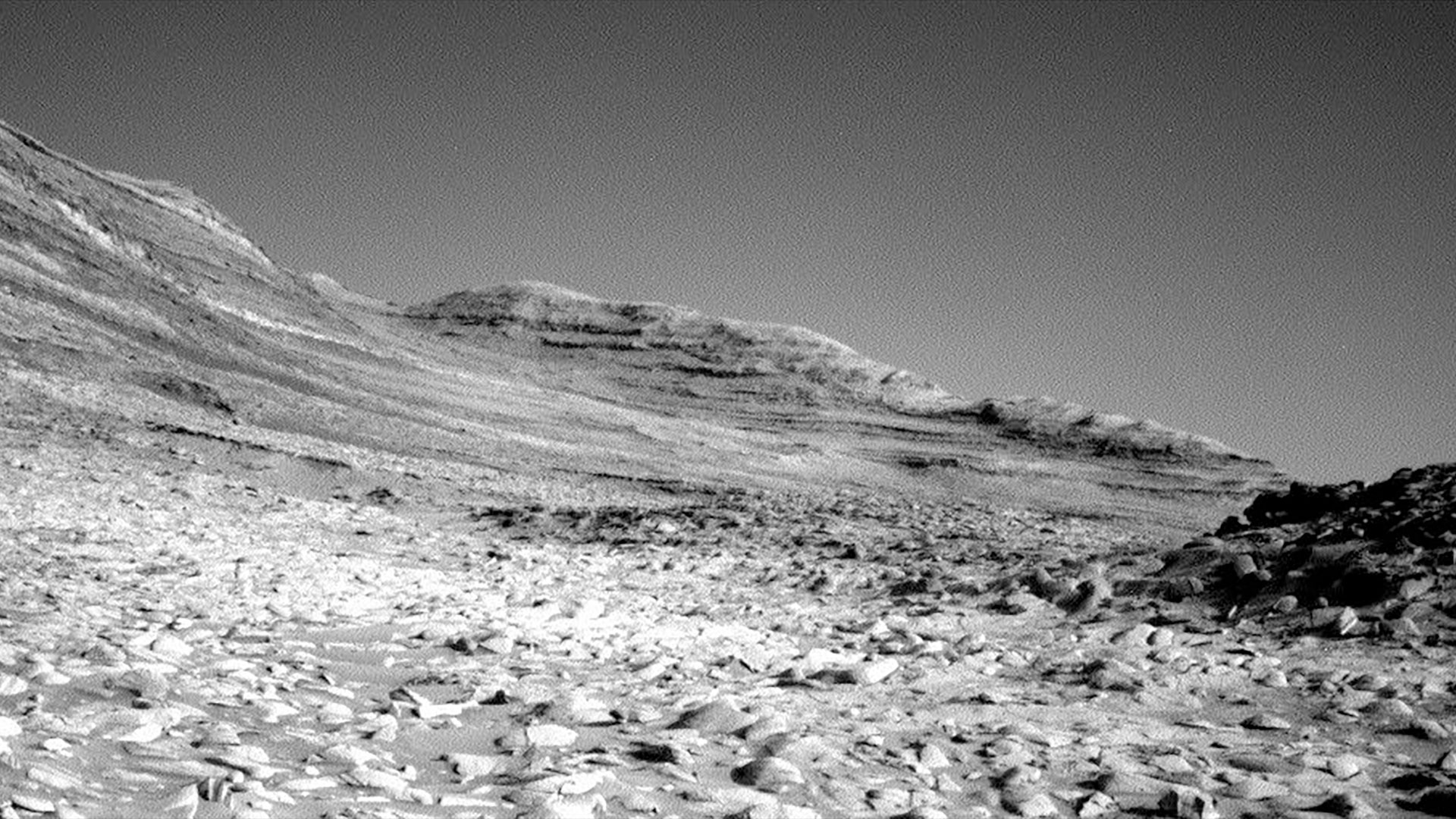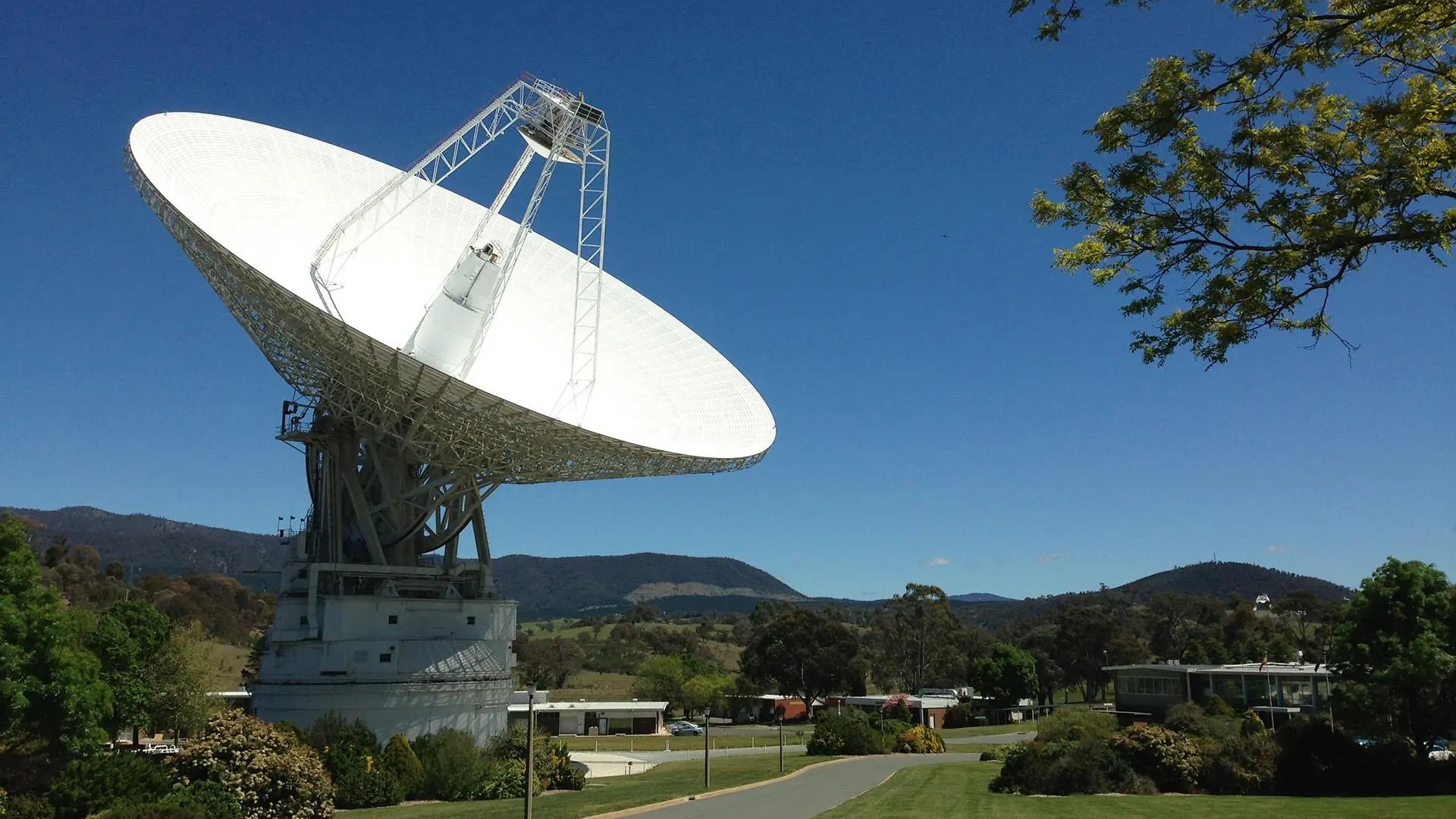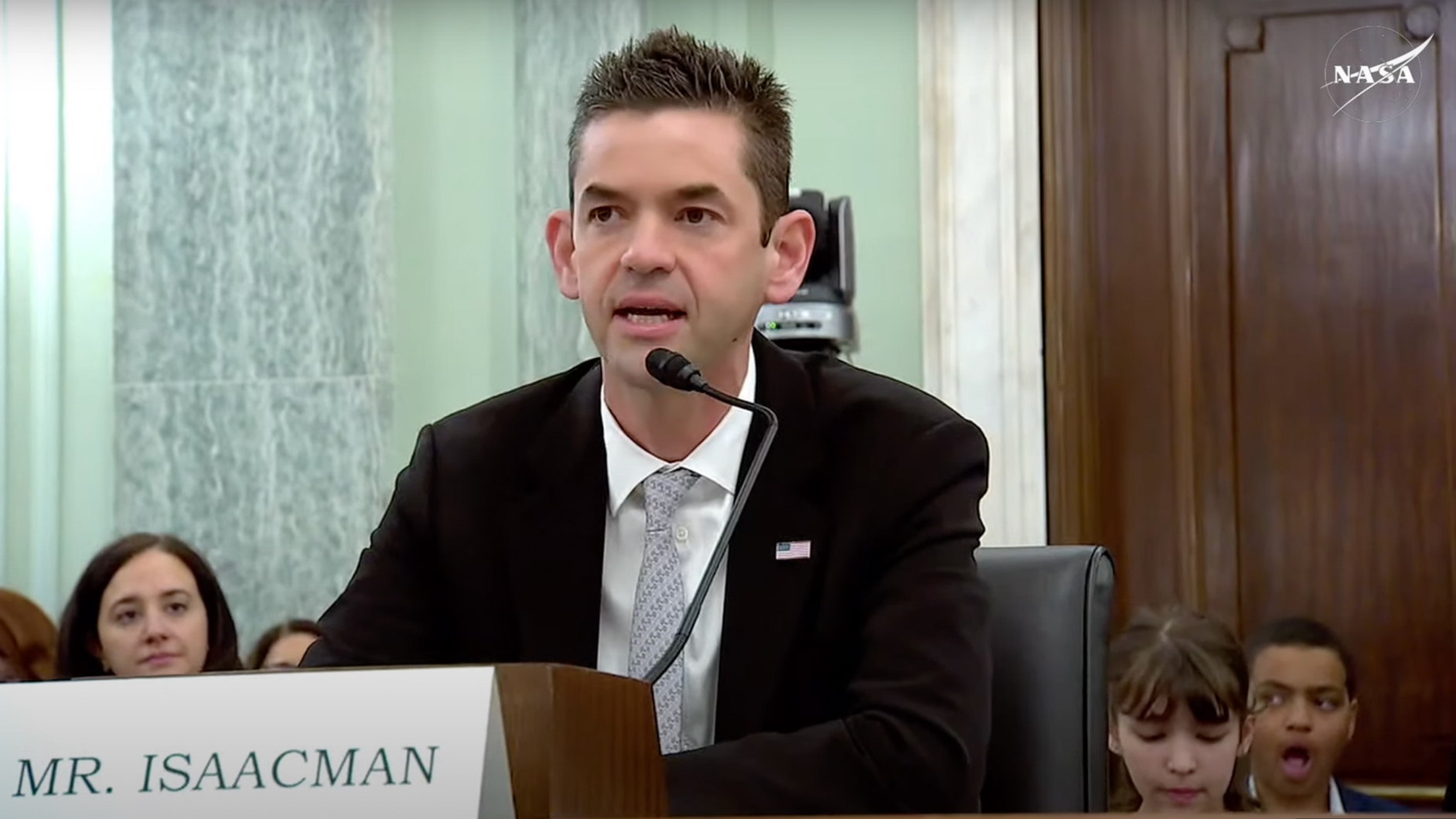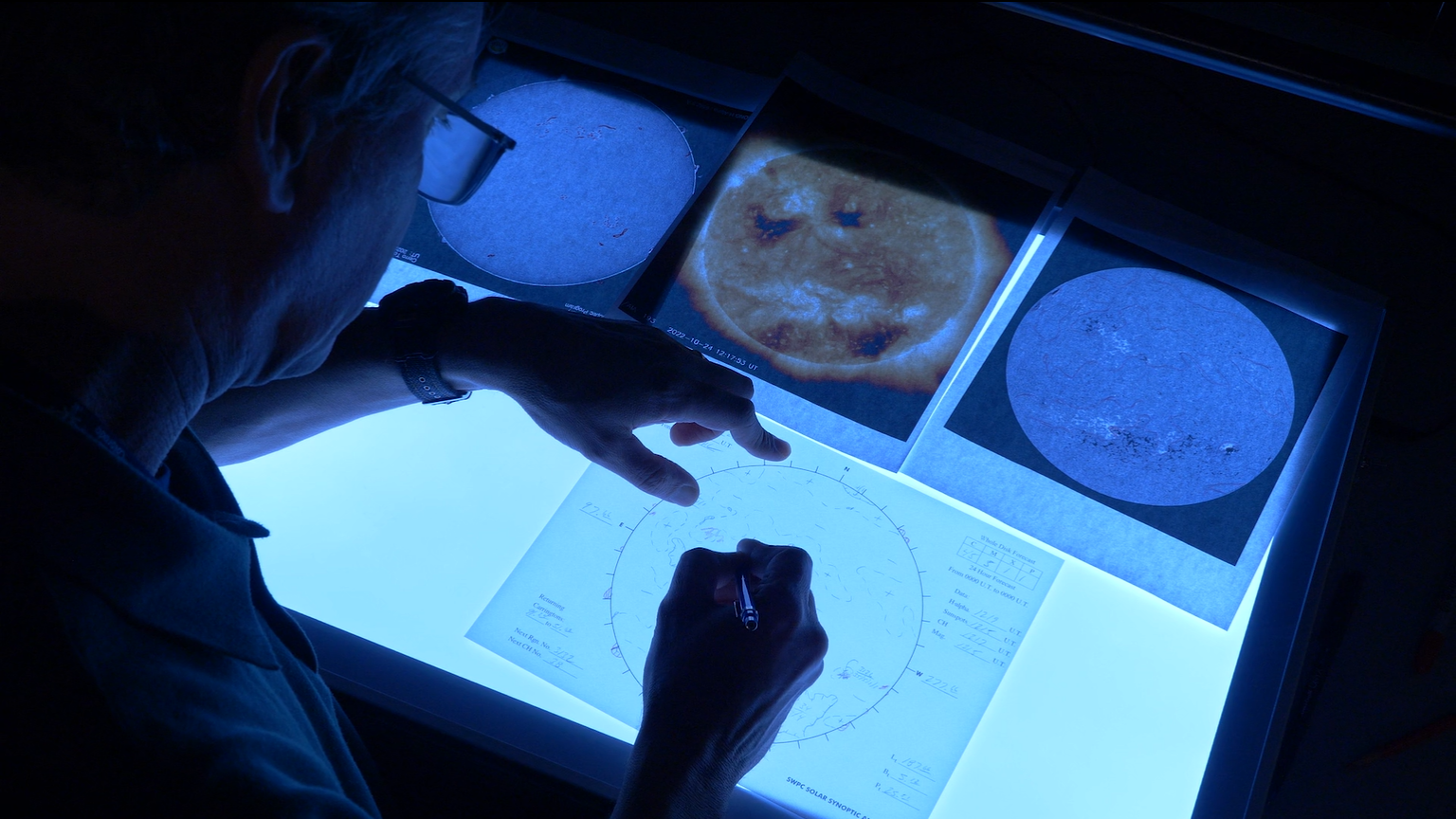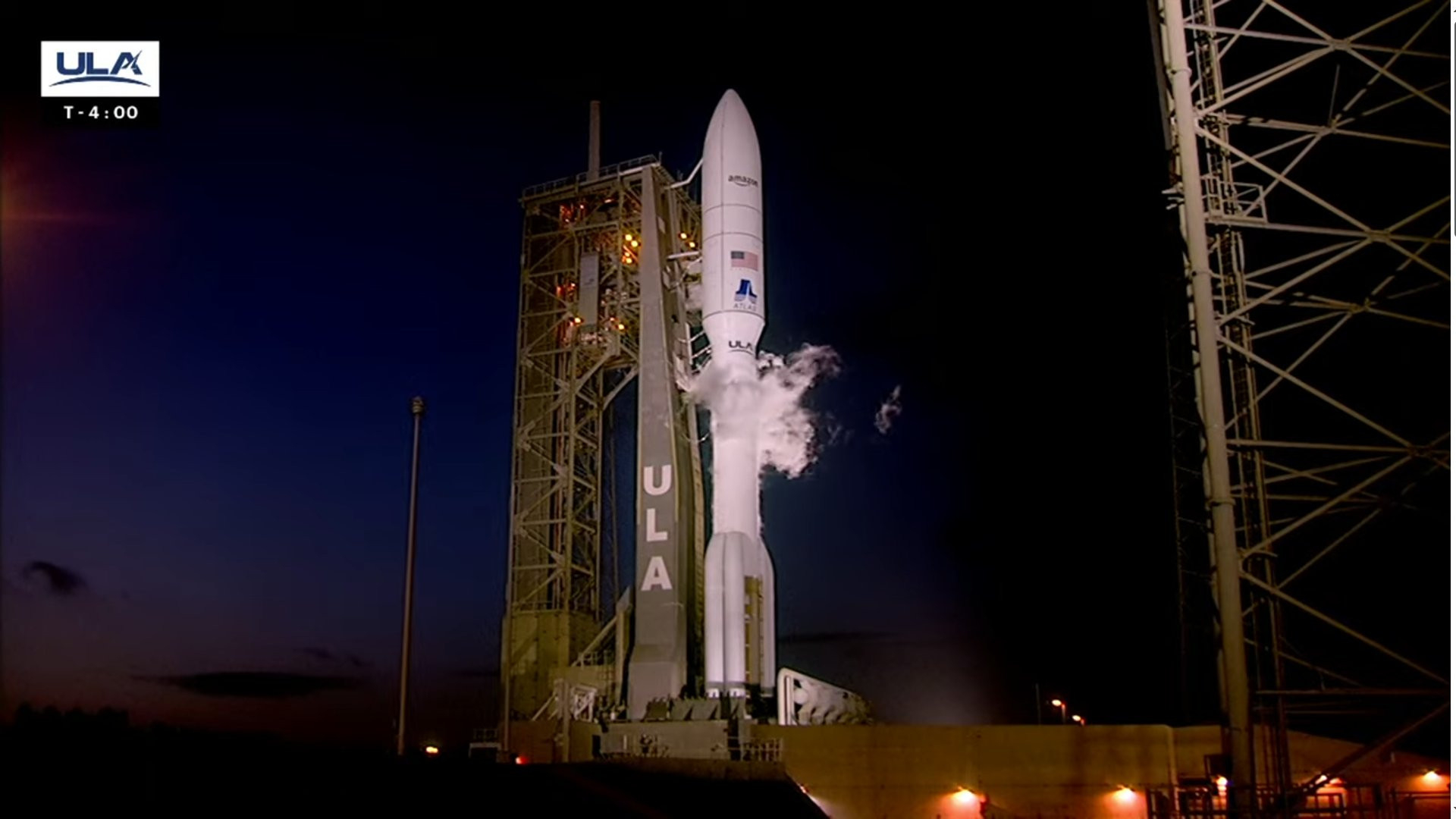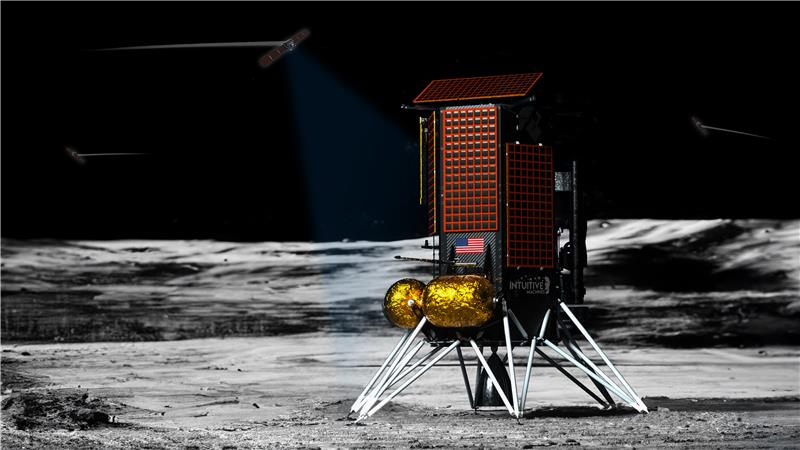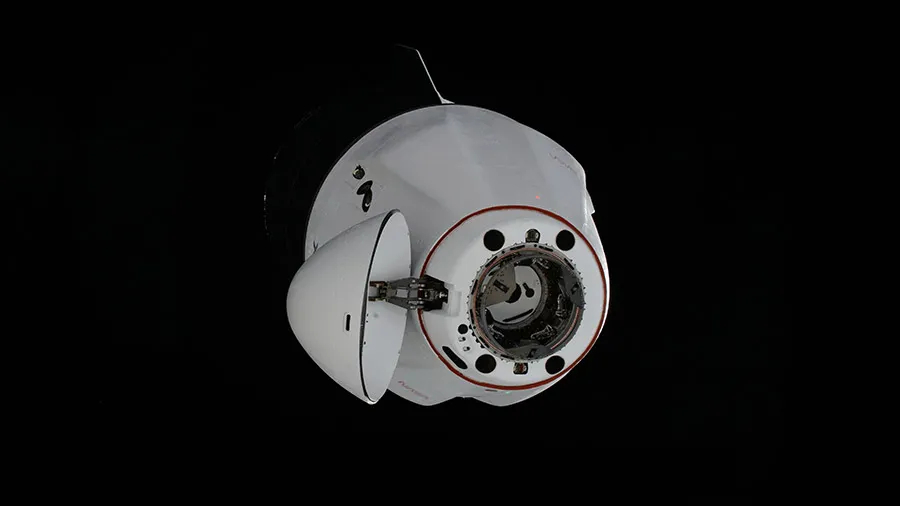
NASA's Mars exploration plans need 'paradigm shifts' to succeed, report finds
NASA needs to "challenge conventional thinking and look to new and creative solutions for the exploration of Mars."

NASA has released a new document that highlights planned programmatic paradigm shifts in Mars exploration over the next 20 years.
This plan was prepared for the NASA Science Mission Directorate's Mars Exploration Program (MEP).
The report is titled "Expanding the Horizons of Mars Science: A Plan for a Sustainable Science Program at Mars — Mars Exploration Program 2024-2044."
Core questions
Highlighted in the document are several “paradigm shift” prospects to further address several core questions, which include:
How has the habitability of Mars evolved over the history of the planet?
Did life ever arise on Mars, and if so, does it exist today?
Related: Life on Mars: Exploration & evidence
Get the Space.com Newsletter
Breaking space news, the latest updates on rocket launches, skywatching events and more!
The document also looks at lower-cost Mars missions. Commercial services, the human exploration of the Red Planet and international Mars ambitions are also flagged as paradigm shifts.
"NASA is no longer one of the few with focused Mars exploration ambitions," observes the report.
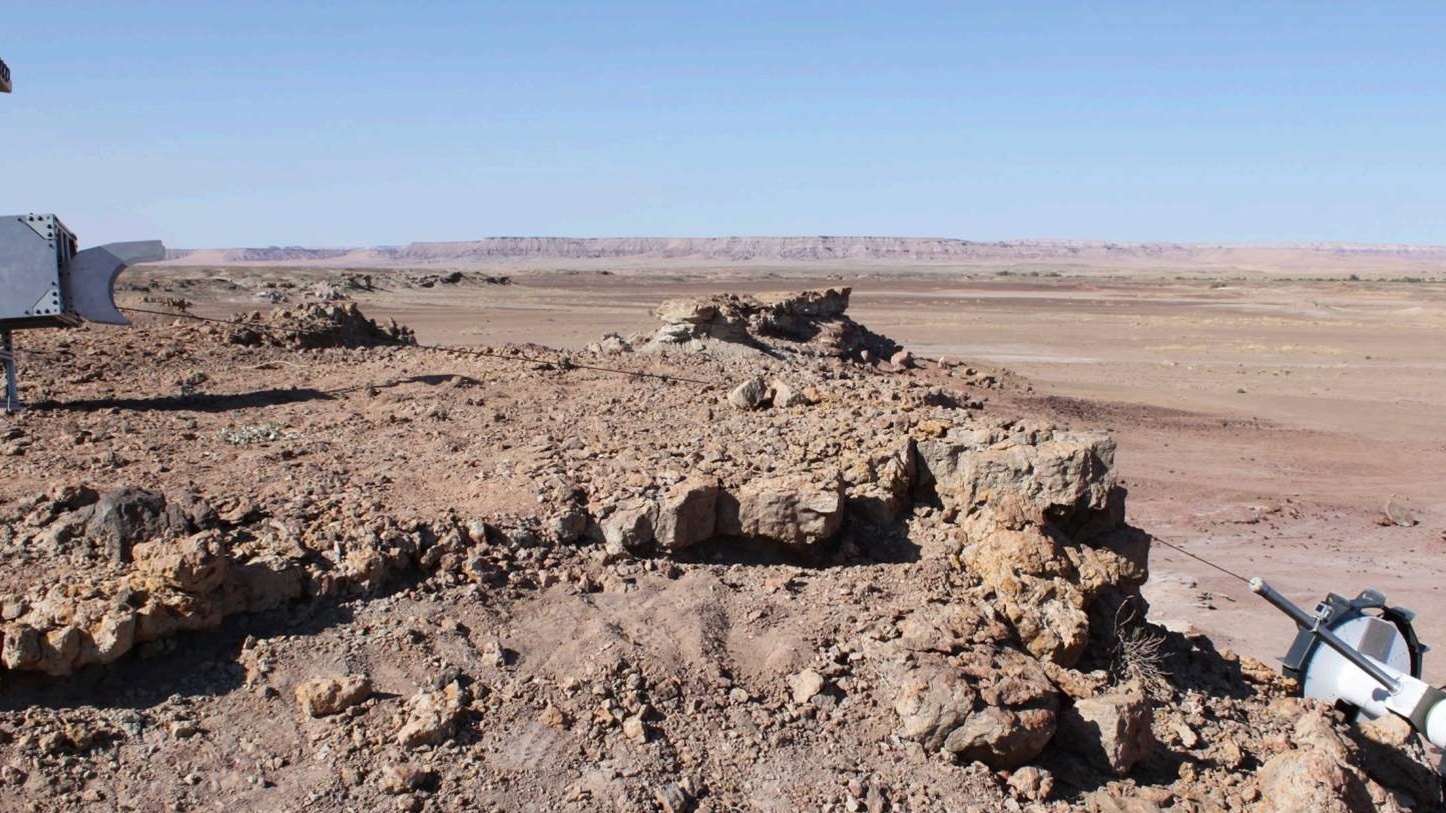
New, different model
"To remain a vanguard in Mars exploration, MEP must embrace a new, different model: the ability to send more — and more frequent — missions to Mars in an affordable and achievable manner, and to do so while cultivating a diversity of talent and engaging the public in opportunities to explore Mars,” the report points out.
The report defines a "lower-cost mission” as approximately $100 million to $300 million, exclusive of the launch vehicle and mission operations.
A “medium-class strategic mission" is pegged at between approximately $1 billion and $2 billion, exclusive of the launch vehicle and mission operations.
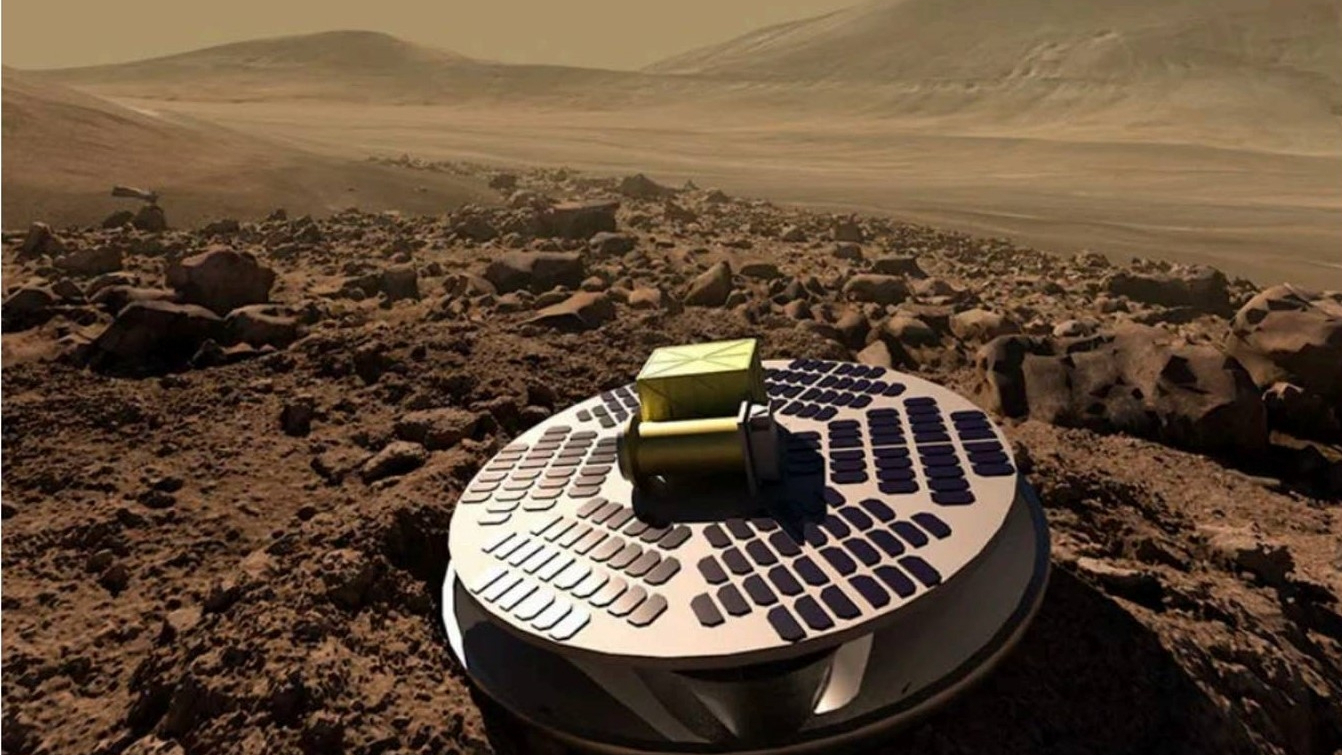
Partnerships
As for tapping into commercial services, the report states that exploring Mars together "through new partnership models with the international, commercial and academic communities is essential."
This type of paradigm shift would mimic other innovative public-private partnership solutions, such as NASA’s Commercial Orbital Transportation Services (COTS) and Commercial Lunar Payload Services (CLPS) endeavors.
Life on Mars
The search for life on Mars remains a significant undertaking, according to the new report.
“Any potential oasis for present life or preservation of ancient life are likely located in terrains that have historically been more challenging to access," the document states. "Some of the most fascinating landscapes on Mars, for example, are found in the southern hemisphere, where the mean surface elevation has prevented robotic spacecraft from landing by traditional means.”
At the same time, there are other locales providing conditions potentially conducive to life, such as the subsurface (including caves, subsurface ice deposits and volcanic environments), "where suitable chemistry and environmental conditions may have allowed life to gain a foothold," the report adds.
However, given the prospect of boots on Mars, NASA’s Mars Exploration Program "has a small window of opportunity to seek life in a pristine Martian environment, as human exploration may be possible as early as the late 2030s, following successes at the moon."

Challenge conventional thinking
Eric Ianson, director of the NASA Mars Exploration Program, states in the report that there’s a need to "challenge conventional thinking and look to new and creative solutions for the exploration of Mars."
This can include “seeking lower-cost science investigations, strengthening our infrastructure around Mars, seeking new enabling technologies and creating an environment that broadens participation in Mars exploration,” Ianson states.
You can read the new report here.
Join our Space Forums to keep talking space on the latest missions, night sky and more! And if you have a news tip, correction or comment, let us know at: community@space.com.

Leonard David is an award-winning space journalist who has been reporting on space activities for more than 50 years. Currently writing as Space.com's Space Insider Columnist among his other projects, Leonard has authored numerous books on space exploration, Mars missions and more, with his latest being "Moon Rush: The New Space Race" published in 2019 by National Geographic. He also wrote "Mars: Our Future on the Red Planet" released in 2016 by National Geographic. Leonard has served as a correspondent for SpaceNews, Scientific American and Aerospace America for the AIAA. He has received many awards, including the first Ordway Award for Sustained Excellence in Spaceflight History in 2015 at the AAS Wernher von Braun Memorial Symposium. You can find out Leonard's latest project at his website and on Twitter.
-
Unclear Engineer I don't see how we can be planning Mars exploration out into the 2040s with much certainty at this point. We don't know if NASA, China or SpaceX will be successful in putting much advanced robots or humans there. Both the funding and the technological development progress are unusually uncertain at this point.Reply
But I think we should be trying to formulate a plan for whoever gets there to be careful to not contaminate Mars with Earth life forms before we can determine if there are or ever have been any Martian life forms there. We need to safeguard the scientific opportunities that we will not have another chance to learn from. -
Classical Motion I would think that any life we contaminate Mars with would be higher life forms, not the kind that can take raw chemical compounds for nutrition. Our contamination wouldn’t last long.Reply
Of course that’s just a thought. We have huge families of environmental MICROBE DNA and we don’t have a clue as to what they do or how they survive.
They might use raw matter too, in air or soil environments.
But that can not be prevented, it’s part of all we are. -
James Parker NASA has shown little capability to perform human exploration in the 21st century. Why not just contract SpaceX to do a manned Mars mission? They offer the highest chance of success with the lowest cost and the greatest simplicity.Reply -
contrarian ReplyClassical Motion said:"I would think that any life we contaminate Mars with would be higher life forms, not the kind that can take raw chemical compounds for nutrition. Our contamination wouldn’t last long."
Any bio-contamination we introduce on Mars, of whatever form, is not likely to last long in the punishing radiation that is hammering it every day. Some structural components from Earth (or built up from Martian rocks etc. ) would be required for any successful bio-habitation. And that would have to be maintained. We should be focused on life on Earth, and just send robots. No better way to study Mars, and help life here. -
Classical Motion We have got some probes coming up for the outer systems. And of course they are excited about finding life.Reply
They won’t. And I don’t think we need to worry about contamination in either direction. There is no life out there and no where for our contamination to survive.
It’s just my opinion. I am more interested in tracking the true orbits of those moons thru those debris fields. That’s where the magic is. -
Philly Reply
SX has their hands full just trying to build the equipment that will get us there. Let's say by 2034 in 10 years, they are able to send 100 tons on a MarsShip for the price of $300 million. Landing a fuel producing plant for another $500 million and refueling the ships on Mars is part of that. All fantastic! Except for one thing.James Parker said:NASA has shown little capability to perform human exploration in the 21st century. Why not just contract SpaceX to do a manned Mars mission? They offer the highest chance of success with the lowest cost and the greatest simplicity.
If we have never developed the equipment to live and work on Mars and have to wait another 10-20 years before the infrastructure to live and work on Mars is ready it won't matter if we have the capability to get there. The time to start building the Mars infrastructure is now. SX is busy enough with just trying to build the rockets to get us there. Food, fuel and water are needed, much better if we can create or find it on
Mars rather than shipping it there from Earth. Even for a Moon base. Buildings made from on-site materials will also be critical. Self directed AI Robots will also play a huge role. A holistic approach as to the required equipment needs to meet the launch capabilities that SX is developing now. It won't matter if we can land 100's of tons on the Moon or Mars if that equipment is decades away because it wasn't developed in the 2020's.
I believe it is a waste of time for some of these small start ups to try to build rockets, that race is over. The next great opportunity is in Moon/Mars infrastructure to load up on Starship once it is working. Companies of the future SpaceY and SpaceZ will make billions selling equipment and infrastructure that will fly on Starship.
Starting that process company now in 2024 is the critical moment. Not in 2034 when 20 Starships are landing on Mars. If your company has the best and cheapest solutions, guess what will become the standard? -
Torbjorn Larsson The updated master plan now includes a larger Moon cargo transporter and a rover, nothing that is targeted towards Mars.Reply
Here are the most important of NASAs Mars plans:
Under the current plan, the MSR lander would launch in 2035, and the sample-return mission wouldn't occur until 2040.
Meanwhile, China is accelerating its Mars plans.
In a September update at a space exploration conference, Jizhong Liu, the chief designer of Tianwen-3, said the mission is on track to launch in 2028.
According to Space News, Tianwen-3 will include a lander, an ascent vehicle, an orbiter and a return module; it also may use a helicopter and a six-legged robot for gathering samples at a distance from the lander.A 2028 launch would bring Tianwen-3 back to Earth in 2031.
https://www.livescience.com/space/mars/china-aims-to-be-1st-to-bring-samples-back-from-mars
The primary contamination problem is for sample gathering and analysis, which are hampered or destroyed by brought organics and cells.Classical Motion said:And I don’t think we need to worry about contamination in either direction. There is no life out there and no where for our contamination to survive.
Any extant martian life would be crustal and the first time we could sample that is with ExoMars sufficiently long drill to pass the sterilized surface. Our own lifeforms are not adapted to the environment and should be outcompeted when they start to penetrate the crust under e.g. habitats.
That's history. Now we assemble and annotate whole genome data, and can tell what metabolism they do and even tell some on their environments. As an example from another field, the latest LUCA reconstruction told on the ecology by way of the metabolism and the cellular immune system:Classical Motion said:We have huge families of environmental MICROBE DNA and we don’t have a clue as to what they do or how they survive.
The analysis, published in Nature Ecology and Evolution in July, sketched a surprisingly complex picture(opens a new tab) of the cell. LUCA lived off hydrogen gas and carbon dioxide, boasted a genome as large as that of some modern bacteria, and already had a rudimentary immune system, according to the study.
But it’s unlikely that LUCA would have evolved complexity in isolation, the authors argue. Since its metabolism is consistent with both relying on and potentially supporting other microbes, LUCA was likely part of a broader ecosystem, from which its lineage was the sole survivor.
At the very least, that ecosystem contained viruses: The researchers say LUCA likely housed 19 CRISPR genes, which bacteria use to slice up viral threats.From these genes, they estimated that LUCA lived about 4.2 billion years ago — roughly 300 million years after the moon was formed from the collision of a Mars-size planet with Earth.
https://www.quantamagazine.org/all-life-on-earth-today-descended-from-a-single-cell-meet-luca-20241120/
The full tree with the split between biology and geology in deep ocean hydrothermal vents have been dated to 4.5 - 4.3 million years ago, and the deepest split between Archaea and Bacteria to 4.3 - 4.2 billion years ago.
https://theconversation.com/extreme-environments-are-coded-into-the-genomes-of-the-organisms-that-live-there-219072 , the above work.
-
contrarian ReplyClassical Motion said:We have got some probes coming up for the outer systems. And of course they are excited about finding life.
They won’t. And I don’t think we need to worry about contamination in either direction. There is no life out there and no where for our contamination to survive.
It’s just my opinion. I am more interested in tracking the true orbits of those moons thru those debris fields. That’s where the magic is.
I agree that they won't find any life forms in those cold and darker regions.
It seems unlikely that any of those moons would have evolved an "energy cycle". Life on Earth likely arose from large amounts of reduced carbon compounds from thermal vents. Life has continued to this day by the appearance of photosynthesis, which almost everything relies on, one way or another. Our energy cycle.
You can have all the things required for life on some of those icy moons, but if you don't have an energy cycle, it seems impossible to survive for very long. Those moons might have had life long ago, but the lack of an energy cycle would not allow life to persist for extended periods of time. -
Unclear Engineer There are lots of potential "energy cycles".Reply
Some are quite simple. For instance, it is possible to harvest the energy from radioactive decays, which produce ionizing radiation that produces chemicals that can be used biologically for energy. We have bacteria here on Earth that apparently do that.
And, that could occur just about anywhere, provided that there is a solvent for chemical transport, and provided that there is enough time and suitable environmental volume for evolution to produce the necessary complex cycles.

